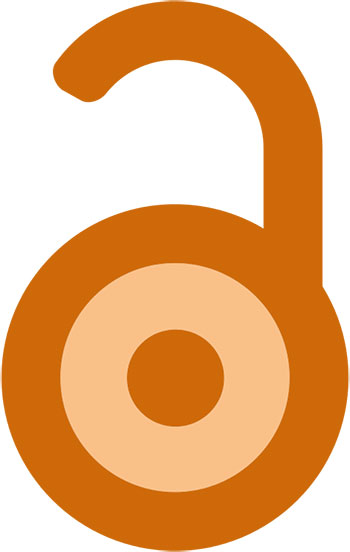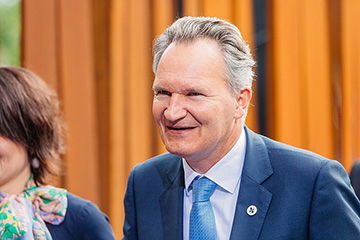
[Image: Getty Images]
The beginning of September 2018 brought a thunderclap to the scientific-publishing world, with the announcement of the controversial “Plan S.” The plan, which comes from a group of core European national and E.C. funders that together support billions of euros worth of scientific research, holds that as 1 January 2020—just over 12 months from now—any research that the funders support must be “published in compliant Open Access [OA] Journals or on compliant Open Access Platforms.”
Since its announcement, Plan S has attracted the endorsement of a few additional, major private funders, including the Gates Foundation and Wellcome Trust. And late last month the group behind the plan, cOAlition S, provided further guidelines and clarifications that mark out the narrow path that funded authors will need to take to comply. Meanwhile, the plan has bitterly divided the academic research community, with even some scholars who generally support OA calling the Plan S mandates a violation of “researchers’ academic freedom.”
Threat to scholarly societies?
The guiding spirits of cOAlition S have made no secret of their desire to upend the current journal-publishing landscape, and to help “fundamentally revise the incentive and reward system of science” through a bold step that forces the OA issue. The avowed targets would seem to be the same ones that have long occupied OA advocates’ crosshairs: large commercial publishing firms such as Elsevier, and high-profile, marquee subscription journals such as Nature and Science.
But a number of commentators on the plan, from both the publishing and academic communities, have raised the possibility of collateral damage to another big part of the scholarly ecosystem: nonprofit societies. These nonprofits fund a large share of their activities in support of their communities through subscription revenues from journal publishing. And some critics assert that, ironically, Plan S could well drive some of them out of the publishing business entirely, further concentrating power in the hands of the big commercial players. (Note: OSA, the publisher of OPN, also publishes a suite of both subscription and open-access journals.)
Mixed economy

[Image: Getty Images]
The rise of online and digital publishing has brought increasing mandates by some government and major private funders for free, open online access to the fruits of scientific research. In response, societies with journal-publishing operations have generally taken an incremental approach, attempting to preserve existing subscription revenue while offering a variety of open-access options to authors.
These options have included the creation of new “gold” OA journals, in which authors or their funding agencies pay an article processing charge (APC) to fund OA publication. Publishers have also created hybrid OA journals, which are subscription publications with an OA option for authors who pay an APC, and which have accounted for much of the growth in OA-published articles in recent years. Still another alternative floated recently, which a few societies have already put in place, has been so-called mirror journals—OA journals that share the same editorial and production resources as similarly named subscription journals published by the same organization.
An alternative approach to meeting current OA mandates, targeted at authors unable or unwilling to pay APCs, has been “green” OA, in which authors are given the option of posting a version of the accepted manuscript in their organization’s institutional repository. Society and commercial publishers alike have generally embraced this model, allowing institutional posting of manuscripts after an embargo period ranging from several months to a year. The embargos, negotiated by publishers with various government and private funders, in principle allow the publisher to maintain at least some of the value of a paid journal subscription, while eventually providing open access to the published research.
The result of these varying streams is mixed publishing environment for scholarly research that has increasingly tilted toward open access. According to statistics from Universities UK, based on statistics from Elsevier’s Scopus database, some 15.2 percent of global journals published under some form of gold OA in 2016, versus 12.4 percent in 2012. Hybrid subscription–OA journals expanded from 36.2 percent of the total to 45.0 percent over the same period. The proportion of subscription-only journals, by contrast, shrank from 51.3 percent of the global total in 2012 to 39.9 percent in 2016.
An effective mandate for gold
These figures suggest a clear trend toward more OA, whether through gold-OA or hybrid-journal options. But the advocates of Plan S would like to see things move much faster.

Some have argued that Plan S is effectively a mandate for gold open access as opposed to other models. [Image: Jonpatterns (CC BY-SA 4.0), from Wikimedia Commons]
To make that happen, according to a number of commentators, the plan would, more or less in a single stroke, knock the foundations out from under the mixed publishing business model that has evolved within the publishing landscape. The main reason, according to these voices, is that notwithstanding its rhetoric about supporting multiple business models, Plan S is effectively a funder mandate for a single approach: author-pays (or funder-pays), gold OA.
One analysis of the potential impact was provided by Michael Clarke, an industry consultant, writing in The Scholarly Kitchen, the blog of the Society for Scholarly Publishing (SSP). Clarke notes in particular the Plan S stipulation that OA publication by authors in hybrid journals doesn’t comply (though the plan will, under certain conditions, allow OA publication in such journals during a “transition period”). The plan also prohibits publication of funded research in the mirror journals that some society publishers have eyed as a potential way of expanding open access while keeping editorial and production costs under control.
cOAlition S ostensibly does support green open access as an option for meeting the mandate. But deposition in an institutional repository would count as compliance with Plan S only if the posted versions became available immediately—without the embargo periods and copyright transfer licenses that publishers have relied upon to protect the value of their subscriptions.
Such postings would also need to be made under a Creative Commons Attribution (CC-BY) license, which allows essentially unlimited reuse of the content without permission. Indeed, the broad Plan S preference for CC-BY, whether the OA is green or gold, potentially closes off yet another part of the mixed business model that has traditionally underpinned subscription publishing operations: reprint and licensing income on published content.
“Bite the bullet”

Robert-Jan Smits, the E.U. Commision’s special envoy on open access. [Image: Arno Mikkor (EU2017EE)/Wikimedia Commons; Creative Commons Attribution 2.0 Generic license]
Some of the pronouncements by cOAlition S figures have done little to allay the concerns of nonprofit scholarly societies about the plan’s aims and threats. In a meeting to address the concerns of a group of academic scientists about the plan’s top-down approach, Robert-Jan Smits, the E.U. Commission’s special envoy on open access and a key architect of Plan S, reportedly said that, while such societies are a “noble group,” they would have to “bite the bullet and go open access.”
Yet biting that particular bullet is, for most societies, not a simple matter of swapping in one business model for another. For many society publishers, a complete conversion to gold OA, at current APC rates, would not come close to making up for lost subscription revenue. What’s more, Plan S would further complicate such a transition, as another part of the plan envisions imposing caps on APCs, to be determined after “an independent study of Open Access publication costs and fees (including APCs)” to be commissioned by cOAlition S.
Untended consequences
In assessing all of this, some in the community have wondered in Plan S could carry unintended consequences, such as discouraging collaboration with European researchers and potentially barring European authors from publishing in a large number of journals. It’s also been suggested that the plan could reduce publishing choice and options, particularly for researchers living in lower-resource countries that do not provide funding to pay publication charges.

[Image: Getty Images]
Nonprofit societies in particular have argued that the ability to offer high-quality, subscription-based journals as a publication option helps them fulfill their mission of providing publishing options for the entire community. The fast demise of the viability of subscription models in the wake of Plan S, they suggest, could leave researchers in lower-resource countries outside of Europe “frozen out” of publication within their fields.
Indeed, yet another unintended consequence could be driving the independent publishing operations currently run by small scholarly societies into captive arrangements with large commercial publishing operations. Such vertically integrated commercial publishers, according to this argument, are the only ones that enjoy the scale to make the Plan S mandates work on the bottom line.
Plan S could thus, under this view, accelerate the trend of consolidation already at work in the scientific-publishing industry, and reduce the number of independent, non-profit alternative channels.
Exporting revolution?
But just how broadly will Plan S actually apply? According to the consulting firm DeltaThink, the cOAlition S funders accounted for only 3.5 percent of globally published research articles in 2017, including articles where only part of the funding is provided by a Plan S organization. Yet for some publishing operations, and some disciplines—including physics—the exposure appears to be much greater, with the percentage of articles potentially affected by Plan S running well into the double digits.
The European Commission, meanwhile, hinted darkly of upcoming “further actions” under the E.U.’s next funding framework program, Horizon Europe, to “complete the transition to Open Access in line with Plan S,” a clear suggestion that projects under that massive program will be covered as well. And cOAlition S has vowed to export its revolution to other regions of the world. In early December, librarians and funders in China pledged their support, albeit without announcing any concrete steps toward a similar framework. Smits also met with U.S. policymakers in early October to drum up support for the European initiative across the Atlantic.
A turbulent year ahead

[Image: Getty Images]
To be sure, Plan S won’t affect all scholarly societies equally. Society publishers will instead face differential effects, depending on the disciplines they serve, the kinds of research they publish, and their geographical scope and emphasis. And figuring out those effects will be job one next year, as the clock ticks toward the 1 January 2020 Plan S implementation date.
There’s some indication that, notwithstanding Smits’ call for nonprofits to just “bite the bullet,” at least a few members of cOAlition S are taking the potential impact of Plan S on scholarly societies more seriously. On 30 November, the coalition announced that several of its members, including the Wellcome Trust and U.K. Research and Innovation, in partnership with the Association of Learned and Professional Society Publishers, would engage the services of a consultant to “explore a range of potential strategies and business models through which learned societies could adapt and thrive under Plan S.”
The bottom line: Scholarly publishers of all stripes—and, perhaps, especially nonprofit scholarly societies—will face a turbulent and busy 2019, as they come to grips with how Plan S will affect their own operations, and figure out ways to adapt.
